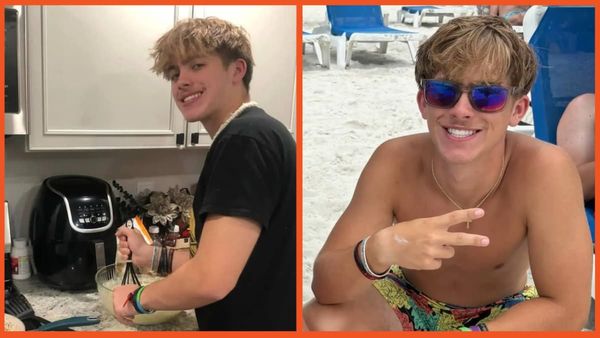
Early last year, there were migrant caravans approaching the US border. They weren’t the first, nor will they be the last, but it was another flashpoint in a long history of migration to the US, this time against the backdrop of a heated presidential election. There was a feeling in Central and South America that a Joe Biden victory might mean more favourable conditions for those trying to cross into the US. When Biden won, the flashpoint intensified.
There was very little work being done on the Mexican side of the border. There were lots of images of distraught people struggling across the Rio Grande, but fewer of people earlier in the journey, and fewer still that gave those people a sense of personhood beyond their pain. When I was thinking of ways to make the series different, I remembered the work of Adam Broomberg and Oliver Chanarin. They made a series about people in psychiatric institutions, giving patients a cable release and letting them produce images of themselves: selfies before their time. There was a sense of dignity, even humour, that made the series memorable.
I felt migrants were too often painted in two-dimensional terms: these were people from poor countries suffering from the climate crisis, poverty or gang violence, but their desperation was the only thing portrayed. They were just objects of sympathy, not subjects to empathise with.
I travelled to Reynosa, on the eastern end of the border with Texas. The town isn’t all that safe, so I could only go in there for a few hours at a time. There was a community living in a park near the Friendship Bridge that crosses into Texas. That’s where I met Stephanie, who was 17 at the time. She had travelled to Reynosa from Guatemala with her mother. Her father had been the primary breadwinner but when he fell ill, Stephanie’s mother couldn’t make enough working as a seamstress to provide for the family, so they decided to try to enter the US in the hope of better pay and a new life.
There was something really striking about the way she sat there: she was proud, calm and radiated serenity, despite being at one of the most precarious moments of her life. Every photo in the series started with a conversation, an attempt to get to know the subject. But often, including with Stephanie, when I asked how they would like to pose, they had no idea. They just didn’t have the bandwidth – and nor should they have.
After hearing Stephanie’s story, I asked if she wanted to pose in the exact same position as when I first saw her. She agreed, clicked the shutter, and this was the result. The image feels distinctly different from the desperation captured in lots of migrant photography. That isn’t to play down the adversity she and her mother had endured, but here Stephanie could be anyone’s daughter, any young woman with aspirations, hopes and fears.
In the wake of #MeToo and Black Lives Matter, there has been a change in how we, as a society, think about narrative: what it means to present someone in a certain way, who gets to control the narrative, who has controlled it historically. This project was a contribution to those discussions, a way to allow people who don’t often have control of their narrative to be the author of their own story.
I don’t know what happened to Stephanie and her mother. When I tried to get in touch, the mobile number she had given me no longer worked. I hope it means she crossed the border and started her new life.
Adam Ferguson’s CV

Born: Dubbo, Australia, 1978.
Trained: Queensland College of Art (Australia), VII Photo Agency, working in Afghanistan.
Influences: “Caravaggio, Jackson Pollock, Francis Bacon, George Orwell, Jeff Wall, Moises Saman.”
High point: “Finding the courage to take risks and believe in my voice.”
Low point: “Forgetting that people are more important than any picture.”
Top tip: “Rest when you can, work when it counts.”
This series won Adam Ferguson photographer of the year at the Sony world photography awards 2022.







